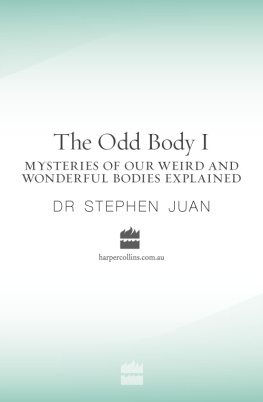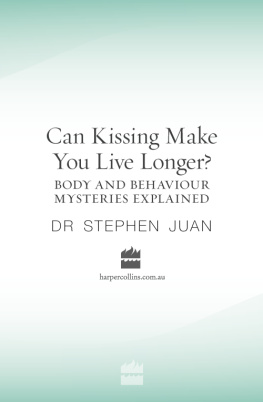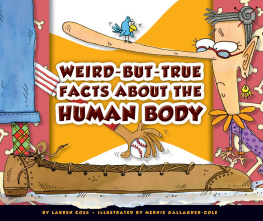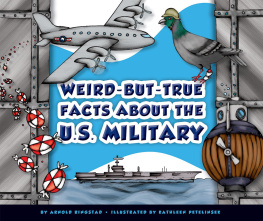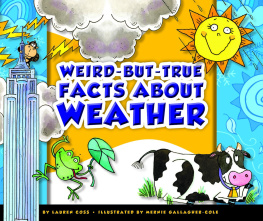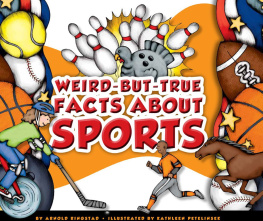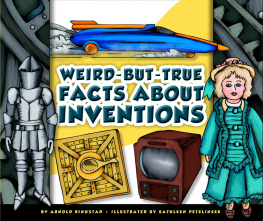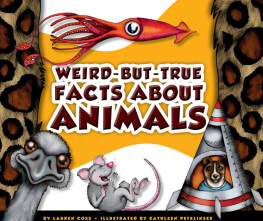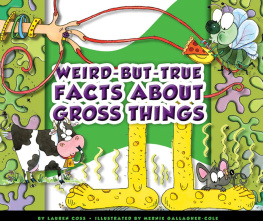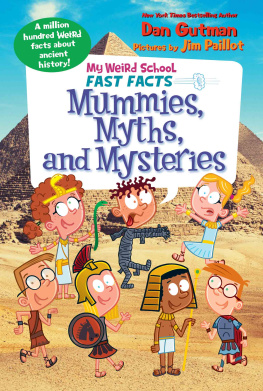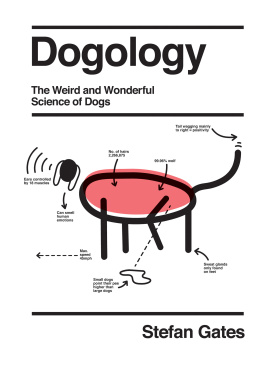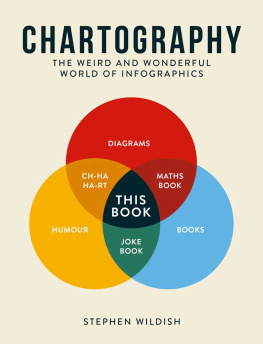D id you ever want to know something about the human body but were afraid to ask? Or you didnt know who to ask? Or there was nobody around to ask? Say you wanted to know about why you yawn, why your skin wrinkles after a bath, something silly like why do men have nipples, or something really weird like can you keep a severed head alive? At home you may have thought about asking your parents. Maybe you even tried. But more often than not they didnt know themselves. If they told you to look it up (the face-saving suggestion to maintain a parents dignity when faced with their own ignorance) and you did, you probably couldnt find a book that gave you the answer you wanted. So you put the question to the back of your mind and eventually forgot about it. A few years later, in biology/life education classes in school, the question may have occurred to you again. Should you ask the teacher? You decided not to. After all, the question was off the subject, it would take up class time, your friends might think you were weird, Mr Fletcher probably didnt know anyway and, after all, it wouldnt be on the exam. So you put off your question again and eventually forgot it again.
Now youre an adult. Youre in your doctors office for your annual check-up. No particular problems, but out of the blue you remember that question you first asked yourself when you were a kid. Should you ask the doctor? After all, doctors are trained in this sort of thing. They ought to know everything about the body since its their job to fix it when its broken. But you hesitate. The doctor is busy. There are other patients waiting. And, after all, your question doesnt relate to your health or to any illness youre likely to get. So you put off your question yet again and forget it again.
If so, then this book is for you. You can stop putting off your questions about the human body. Chances are the answer is here. The Odd Body tries to explain all of those body mysteries youve had, both major and minor, whether for a short or long time. We call these OBQs odd body questions. We ourselves have been asking these sorts of questions for many years more than wed like to admit. We love the commonplace questions, the silly, the weird, the bizarre, the fascinating. We hope your question is answered here. Perhaps too there are a few questions within these pages that you never thought to ask. It might be fun to find out about them just the same.
Chapter 1
Beginnings

M any of us ask questions about our origins, our in utero development, and how we are born into this world. Its said that we come into this world with nothing. But thats only the beginning of the story.
What makes me a human being?
W e are humans because we are classified as such based on our unique physical and cultural characteristics. We manipulate symbols, express ourselves through language, and possess an enormous capacity to develop the intricacies of culture.
Taxonomy is the science of classifying life forms. As science classifies humans, we are members of the animal kingdom, the metazoan sub-kingdom, the chordata phylum, the vertebrata sub-phylum, the class mammalia, the sub-class theria, the infra-class eutheria, and the primate order. After this, it starts to get extremely interesting.
The suborder called anthropoidea is within the primate order. This suborder includes monkeys and apes as well as humans. Within the anthropoidea is the superfamily called hominoidea. This superfamily includes the anthropoid apes and both extinct and modern humans. It excludes the non-anthropoid apes. Anthropoid apes are tailless and include the gibbon, chimpanzee, gorilla and orang-utan. Within the hominoids is the family called hominidea or hominids. Hominids include both modern and extinct forms of human beings. It excludes the anthropoid apes.
What makes the hominids so special is a large brain and the ability to walk on two legs (bi-pedalism). It is a line-ball decision as to where to draw the line between human and our human-like ancestors. One place to draw it is to simply include all hominids as humans.
As for the beginnings of the earliest hominids the beginnings of us anthropologists have been pushing the date back for most of this century as new fossil evidence is revealed.
In 1974, a female hominid skeleton, nearly 40 per cent complete, was found by Dr Donald Johanson and T. Gray of the Institute of Human Origins in Berkeley at a site near Hadar in Ethiopia. Nicknamed Lucy, she was estimated to have lived for forty years and attained the height of 106 cm. Lucy was dated at 3.2 million years old.
In 1978, fossilised footprints and parallel tracks left in volcanic ash and extending over a distance of 24 m were discovered by Dr Mary Leakey and Paul Abell near Laetoli in Tanzania. The three obviously hominid beings that left behind the prints and tracks were estimated to be no shorter than 120 cm tall. The fossils were dated at 3.6 million years old.
In 1984, a hominid jawbone with two molars 5 cm long was found by Kiptalam Chepboi in the Lake Baringo region of Kenya. It has been dated at 4 million years old.
In 1994, Drs Johanson and William Kimbel, along with Dr Yoel Rak of the University of Tel Aviv, reported finding fragments of a hominid skull as well as a number of limbs and jawbones at Hadar. These were dated as being about the same age as Lucy but this hominid was much taller.
Later in 1994, Drs Tim White from the Department of Anthropology at the University of California at Berkeley, Gen Suwa from the University of Tokyo, and Berhane Asfaw from the Ethiopian government reported finding part of a childs jaw and two teeth at a site near the village of Aramis, 65 km south of Hadar. These fossils have been dated at 4.4 million years old the earliest hominid remains so far.
The existence of this last fossil supports the theory that a common hominoid ancestor for all hominids lived in Africa no more than 6 million years ago.
Humans are also Homo sapiens. We belong to the genus of Homo and the species of sapiens.
The earliest member of the Homo genus is the Homo habilis or handy man. In 1964, part of a handy mans skull was found at Olduvai Gorge in Tanzania and named by Drs Louis Leakey, Philip Tobias and John Napier, with the assistance of Raymond Dart. The following year another skull fragment was found in western Kenya but not dated until 1991. The oldest handy man remains have been dated at 2.4 million years old.
Homo erectus is the nearest direct ancestor to Homo sapiens. In 1985, Kamoya Kimeu found the earliest remains of Homo erectus at a site near Lake Turkana in Kenya. It was a nearly complete skeleton of a twelve year old boy who stood 165 cm tall. The skeleton was dated at 1.6 million years old.
The earliest human tools were found in 1976 by Drs Helene Roche and John Wall near Hadar. These basic stone implements used for chopping and slicing have been dated at 2.7 million years old.
When did I first know I was alive?
W e probably know that we are alive sometime before we are born but it is difficult to remember this. It is theorised that we fail to remember because we do not have language to hold on to the memory.

